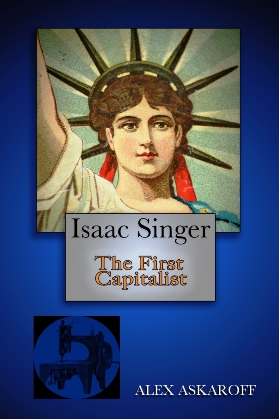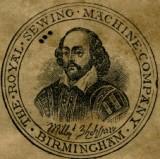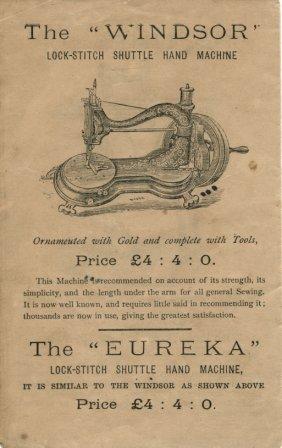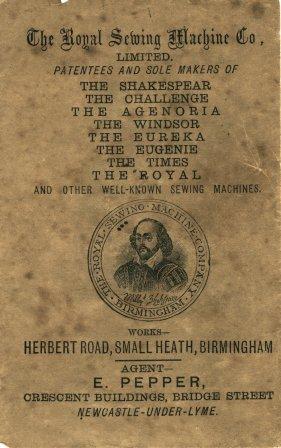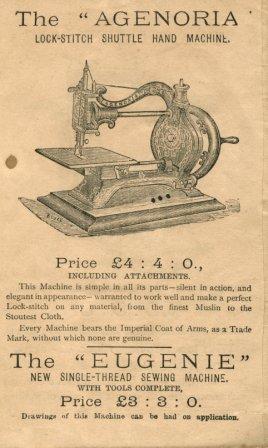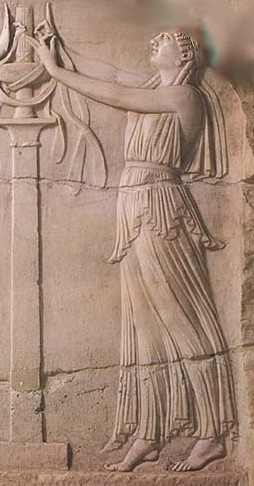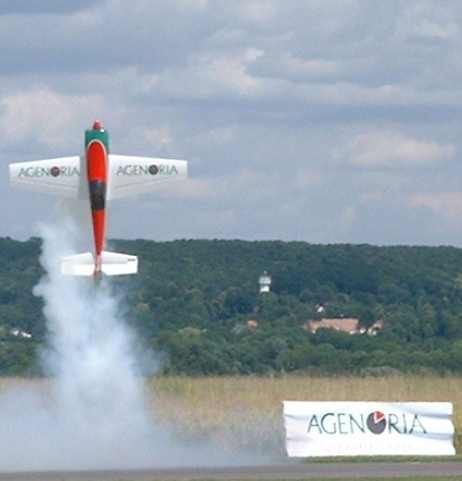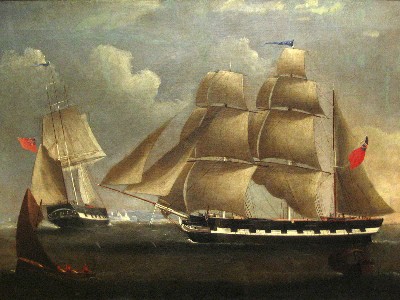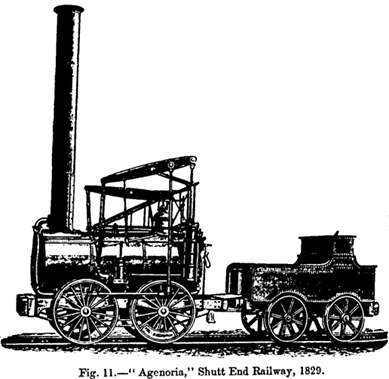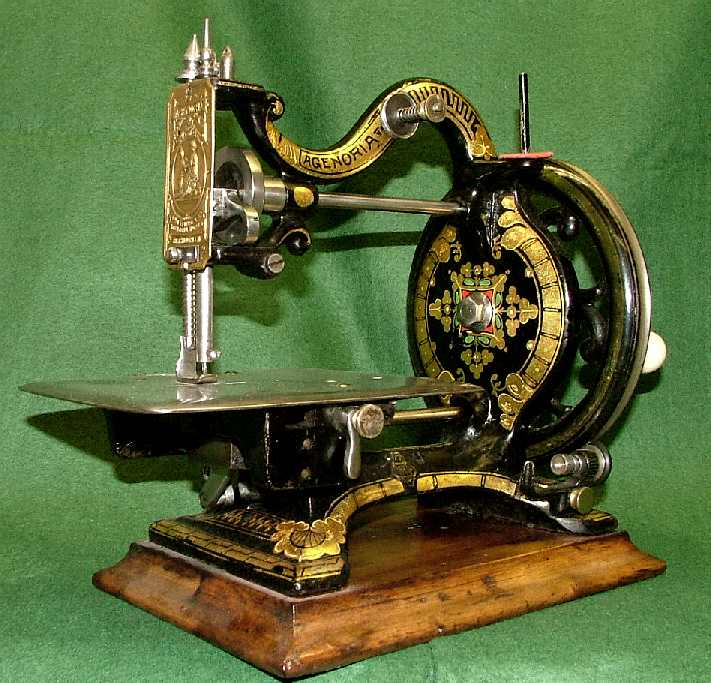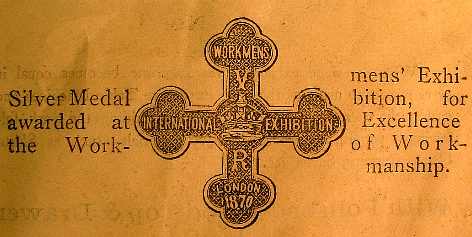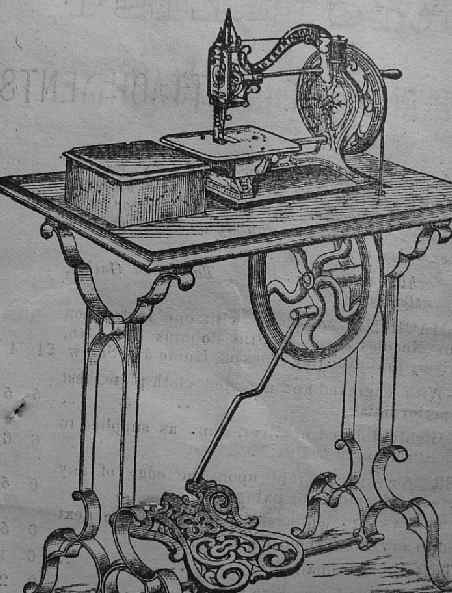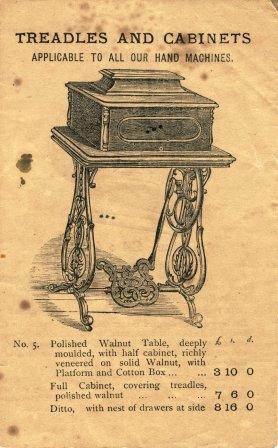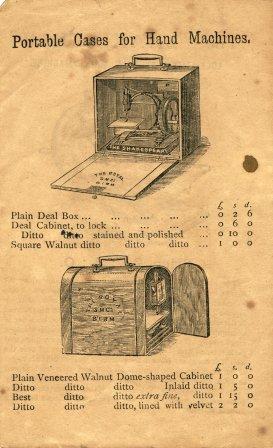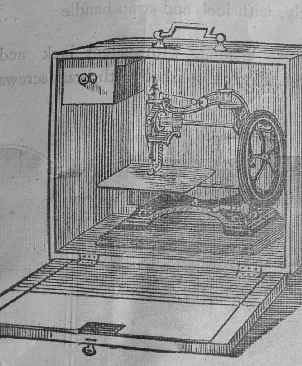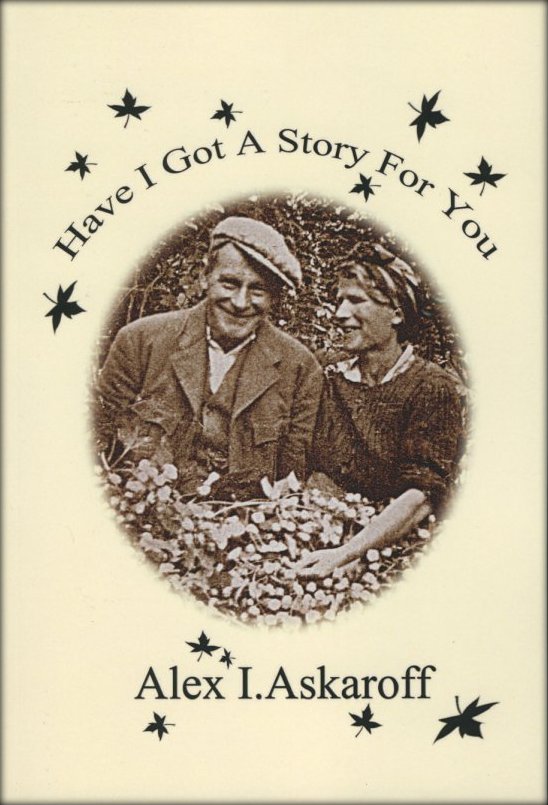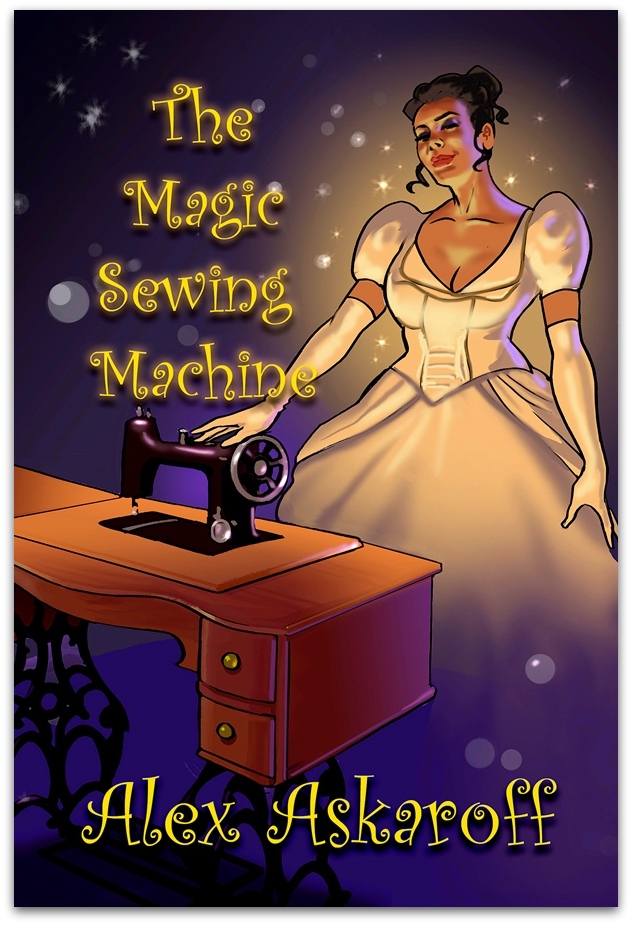|
||||
|
|
Alex has spent a lifetime in the sewing industry and is considered one of the foremost experts of pioneering machines and their inventors. He has written extensively for trade magazines, radio, television, books and publications world wide.
Most of us know the name Singer but few are aware of
his amazing life story, his rags to riches journey from a little runaway
to one of the richest men of his age. The story of Isaac Merritt Singer
will blow your mind, his wives and lovers his castles and palaces all
built on the back of one of the greatest inventions of the 19th century.
For the first time the most complete story of a forgotten giant is
brought to you by Alex Askaroff.
News
Flash! Alex's books are now all available to download or
buy as paperback on Amazon worldwide.
The Eureka sewing machine
The Eureka sewing machine was made by the Royal Sewing Machine Co of Small Heath Birmingham.
The Windsor sewing machine circa 1880
Now before we get to the Eureka and The Royal Sewing Machine Company of Small Heath, Birmingham, England, and the machines they produced we must talk about the Agenoria.
The reason is that the Agenoria sewing machine was being manufactured slightly before the Royal Sewing Machine Co bought out the company that made the machine. Did that make sense? It will become clear I promise.
I will give you the history of one of the most beautiful sewing machines ever made and then incorporate the Royal Sewing Machine Co into our story. It is brief but interesting period of British engineering.
The Royal Sewing Machine Company was, in its time a successful middle England firm that hand built superb and collectible machines. The ones that survive today fetch excellent money when they do appear on auction sites.
The Royal Sewing Machine Co was responsible for the manufacture of many models. They were patentees and sole makers of the following:
The Royal Milton
The Avon
The Times
The Monarch
The Regent
The Shakespear (no 'e')
The Challenge
The Agenoria (once it bought the rights)
The Windsor
The Eureka
The Eugenie
The Royal
The South Kensington
So now lets get to the Agenoria sewing machine one of my favourites in my collection.
The Agenoria
Agenoria
or Agenora was the Roman Goddess of Silence and Industry giving relief
from pain and anxiety. She was a popular goddess among the industrious
Romans and also the protector of The
goddess has inspired many people over the centuries with ships, steam
engines and many others being named after her. We
are concerned with Arthur Isaac Maxfield who gave the Agenoria name to
his factory and to his most stunning sewing machine. Designed in the
1860’s when beauty and practicality went hand in hand The Victorian
Agenoria has often been called the most beautiful sewing machine ever
made.
Considered one of the most beautiful sewing machines ever, excuse the dust! I call it protection from ultraviolet . The
superb sewing machine design was registered in 1869 and patented on Aug
20th 1870. The Agenoria sewing machine was originally manufactured by
Arthur Isaac Maxfield at his Agenoria works in Birmingham
using the Harris & Judson patented movement and had a balance wheel
that could be completely disengaged for bobbin winding. In fact they
actually advertised the machine as the Patent Loose Wheeled Model. The
first models went on sale for the princely sum of £4. 4s. (Four pounds
and four shillings) around two months average wages in 1870! Wow can you
imagine paying that today for a sewing machine. It just goes to show how
important they were. On
the brass needlebar cover was a Registered Design lozenge for 24th
February 1869 (just beneath the machine's name). Below that is an image
of the Goddess Agenoria herself sitting beside a lion while quietly
working. The trade mark of George and the Dragon was always on the
needleplate and later on the brass head plates. The images show St
George riding astride a stallion with a sword stabbing at a writhing
fire-breathing dragon below. The brass end-plate showing the Goddess Agenoria The
machine was an instant success winning the silver medal of excellence at
the International London Exhibition of 1870. Later a special silver
plated model was presented to Her Royal Highness the Princess of Wales.
She loved the machine and later gave her seal of approval to the
Agenoria. The Agenoria then became by Royal Appointment. Copies
of these silver plated models were sold for £6. 6s. The attachments were
silver plated on all m Winners of the silver medal in 1870 Maxfield
must have run into financial problems or been offered a price he could
not refuse for he later sold the Agenoria to The Franklin Sewing Machine
Company of Park Road, Soho, Birmingham. They produced Maxfield’s machine at the Franklin Works,
The start of the Royal Sewing Machine Company
The machine was sold with several different treadles By incorporating the Agenoria they had removed some competition and increased their range, a simple business tactic. Their
factory was at
The Eureka was a copy of the very popular Jones Serpentine machine of 1880. It was a hand machine priced at £4.4.0 A small fortune in 1880. The machines were sold to dealers such as Cole & Co of
The most profitable agent was E. Pepper of Crescent Buildings, Bridge Street, Newcastle-Under-lyme.
All these machines
are immediately identifiable as made by the Boxes were pine or walnut depending on the price The
company out paced by the giants such as Singer and
Jones finally
ceased trading in 1888. It made little news at the time as all the
papers were focused on the brutish murders in Whitechapel by the
infamous Jack the Ripper. While
the company may have faded into history they have left behind a legacy
of some of
the most beautiful sewing machines of all time. Most of us know the name Singer but few are aware of his amazing life story, his rags to riches journey from a little runaway to one of the richest men of his age. The story of Isaac Merritt Singer will blow your mind, his wives and lovers his castles and palaces all built on the back of one of the greatest inventions of the 19th century. For the first time the most complete story of a forgotten giant is brought to you by Alex Askaroff. News Flash! Alex's books are now all available to download or buy as paperback on Amazon worldwide.
"This
may just be the best book I've ever read."
"My five grandchildren are
reading this book aloud to each other from my Kindle every Sunday.
The way it's written you can just imagine walking
beside him seeing the things he does. News Flash! Alex's books are now all available to download or buy as paperback on Amazon worldwide.
|
|||
|
Fancy a funny FREE read: Ena Wilf & The One-Armed Machinist The Eureka sewing machineWell that's it, I do hope you enjoyed my work. I spend countless hours researching and writing these pages and I love to hear from people so drop me a line and let me know what you thought: alexsussex@aol.com
CONTACT: alexsussex@aol.com
|
||||
|
|
|
|
||
